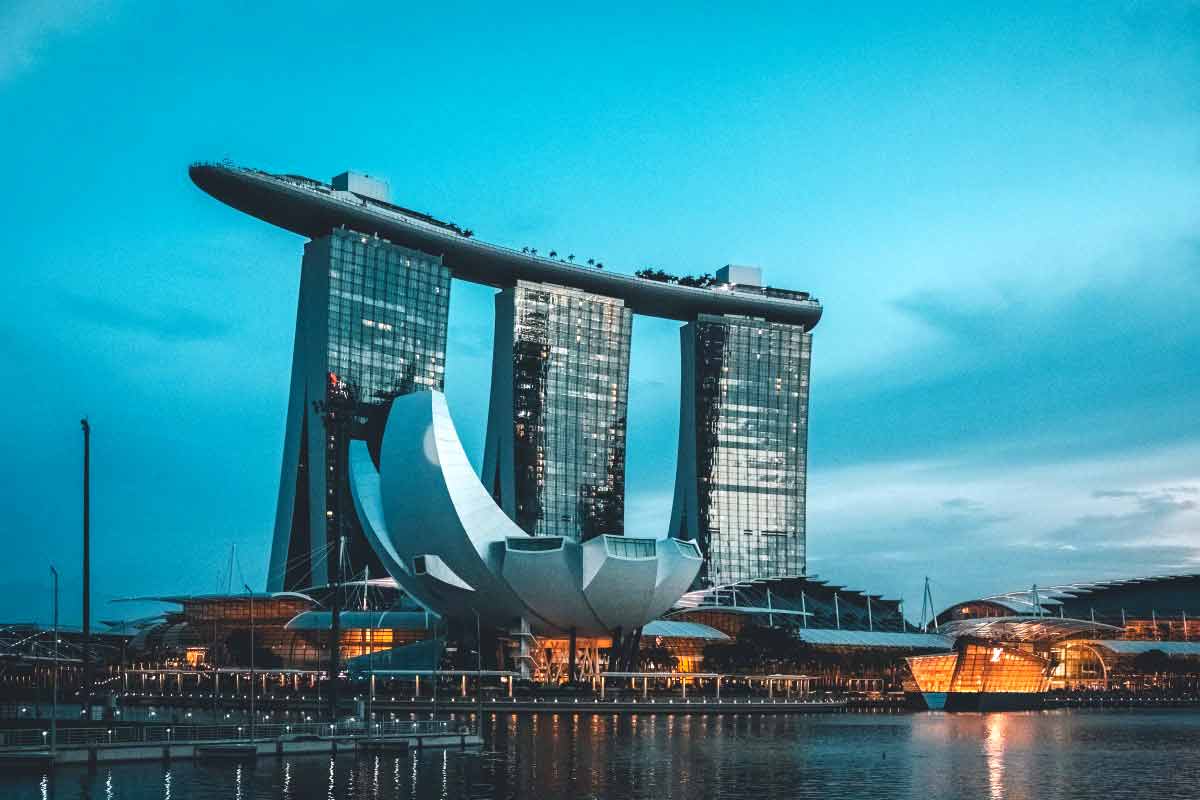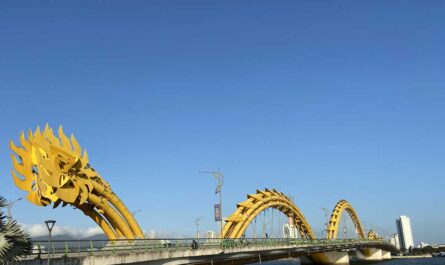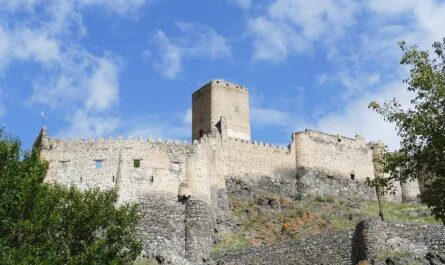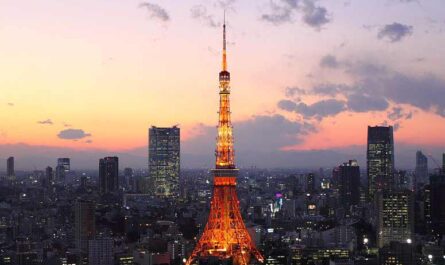Fun facts about Singapore will let you explore this Asian country to a great extent. The ethos of multiracialism reverberates through Singapore’s policy landscape, imprinting its influence on key sectors such as education, housing, and politics. In the realm of education, initiatives promoting multicultural understanding and appreciation are woven into the curriculum, nurturing a generation of Singaporeans equipped with intercultural competency. Similarly, in housing policies, efforts to ensure racial integration are evident, fostering cohesive communities where diversity is celebrated rather than merely tolerated. Moreover, in the political arena, Singapore’s commitment to multiracialism is manifested in the representation of diverse ethnic groups in governmental bodies, ensuring equitable participation and voice for all segments of society.
Fun, Cool, Amazing, Interesting Facts about Singapore
Delving into its societal fabric, Singapore shines brightly in crucial social indicators. With a staggering homeownership rate of 91 percent, it sets a sterling example in the realm of housing. Moreover, Singapore’s commendable performance in education, healthcare, quality of life, and personal safety positions it as a beacon of progress. Noteworthy achievements include one of the world’s lengthiest life expectancies, lightning-fast Internet speeds, and impressively low newborn mortality rates, painting a picture of a society thriving on multiple fronts. Here are some interesting facts about Singapore:
1. Political Landscape
Navigating the intricate web of governance, Singapore operates under the framework of a Westminster-style unitary parliamentary republic. Despite the facade of free elections, the government exerts considerable influence over both politics and society. The enduring dominance of the People’s Action Party since independence underscores this phenomenon. However, amidst these nuances, Singapore stands as one of the key founding members of ASEAN, fostering regional cooperation and collaboration. Furthermore, it hosts the Asia-Pacific Economic Cooperation (APEC) Secretariat and the Pacific Economic Cooperation Council (PECC) Secretariat, showcasing its pivotal role in regional diplomacy. Beyond regional endeavors, Singapore’s global footprint is evident through its membership in various international organizations, including the United Nations, the World Trade Organization, the East Asia Summit, the Non-Aligned Movement, and the Commonwealth of Nations.
2. The Unique Climate of Singapore
Situated near the equator, Singapore boasts a distinctive tropical climate characterized by consistent temperatures throughout the year. Unlike regions with four distinct seasons, Singapore experiences relatively low temperature variance. The island nation encounters two predominant monsoon seasons, each bringing its own distinct weather patterns. From December to March, Singapore is influenced by the northeastern monsoon season, characterized by heavier rainfall and slightly cooler temperatures. Conversely, from June to September, the southwestern monsoon season prevails, bringing drier conditions with occasional thunderstorms. This climate contributes to Singapore’s lush greenery and diverse ecosystems, fostering a vibrant environment teeming with life.
3. Singapore’s Time Zone Quirk
Over the past century, Singapore has undergone a surprising number of alterations to its time zone, totaling six changes since 1905. Despite its geographical position suggesting a time zone of GMT +7.5, Singapore’s current time zone aligns with GMT +8. This deviation stems from historical adjustments, including the need to synchronize timekeeping with neighboring Malaysia. Consequently, Singapore’s time zone reflects GMT +8, a testament to the intricacies of geopolitical relations and the pragmatic considerations shaping the nation’s temporal norms.
4. The Origins of “Lion City”
Legend intertwines with history to elucidate the origins of Singapore’s name, “Singapura,” which translates to “lion city” in Sanskrit. According to folklore, Sang Nila Utama, a prince from Palembang, embarked on a journey that led him to the island. Upon arrival, he purportedly spotted a majestic creature resembling a lion, thus inspiring the moniker “Singapura.” While historical evidence suggests that lions never inhabited the island, the symbolic significance endures. The mythological association with lions evokes strength, courage, and regality, embodying the spirit of Singapore and its storied past.
5. Chilling Historical Record
Remarkably, on the 31st of January 1934, Singapore experienced an uncommon dip in temperatures, with the mercury plummeting to a chilly 19.4°C. This unusual occurrence stands as the lowest temperature ever recorded in the island nation’s meteorological annals. While Singapore typically basks in its tropical climate, characterized by warmth and humidity, this singular event serves as a testament to the unpredictability of nature and the capacity for climatic anomalies to defy expectations. The memory of this uncharacteristically cool day serves as a reminder of the multifaceted nature of Singapore’s weather patterns, occasionally veering from its typical tropical demeanor.
6. Rarity Among City-States
City-states, characterized by their autonomous urban centers serving as both the political and economic hubs of their respective regions, are a rarity on the global stage. Alongside Monaco and Vietnam, Singapore stands as one of only three city-states worldwide. This distinction underscores Singapore’s unique geopolitical status, as a sovereign entity compactly encapsulated within its urban confines. Despite its diminutive size in terms of land area, Singapore wields significant influence in international affairs, embodying the dynamism and resilience inherent in city-state governance.
7. Singapore: A Singular Entity
Singapore defies conventional national structures, assuming a dual role as both a sovereign country and its own capital, functioning as a city-state. This amalgamation of administrative functions consolidates political power and streamlines governance, fostering efficiency and agility within the nation’s decision-making processes. As a city-state, Singapore enjoys a level of cohesion and integration unparalleled by traditional nation-states, facilitating swift responses to societal needs and fostering a sense of unity among its populace. This unique configuration underscores Singapore’s exceptionalism on the global stage, epitomizing the harmonious fusion of urban sophistication and national identity.

8. Geographical Positioning
Singapore occupies a strategic geographical position, situated approximately 137 kilometers (85 miles) north of the equator. Nestled just south of Peninsular Malaysia, it serves as a crucial gateway between the Indian Ocean and the South China Sea. To the south, the Singapore Strait delineates the island from Indonesia’s sprawling Riau Archipelago, emphasizing its maritime significance. This prime location has historically propelled Singapore into a pivotal role in regional trade and commerce, fostering its evolution into a bustling economic hub.
9. Extensive Road Network
Navigating Singapore’s urban landscape is facilitated by an extensive network of roadways, spanning approximately 3,000 kilometers in total length. These thoroughfares crisscross the island, connecting its diverse neighborhoods, commercial districts, and industrial zones. From arterial highways facilitating swift intercity travel to meandering avenues winding through verdant parks, Singapore’s road infrastructure underscores its commitment to efficient transportation and urban accessibility. This intricate web of roads serves as the lifeblood of the nation, facilitating the seamless movement of goods, services, and people.
10. Linguistic Diversity
Reflecting its multicultural heritage and cosmopolitan character, Singapore embraces a rich tapestry of languages. Officially recognized languages include English, Mandarin, Malay, and Tamil, each representing key facets of the nation’s cultural mosaic. However, Singapore’s linguistic landscape extends beyond these formal languages, encompassing a vibrant colloquial dialect known as Singlish. Combining elements of English, Malay, Mandarin, and various Chinese dialects, Singlish serves as a vernacular bridge uniting Singaporeans from diverse backgrounds. This linguistic diversity not only facilitates communication but also serves as a testament to Singapore’s ethos of inclusivity and cultural harmony.
11. Affordable Luxury in the Lion City
While Singapore may carry a higher price tag compared to other Southeast Asian cities, it remains a relatively affordable destination when juxtaposed with most Western counterparts. Whether seeking budget accommodations or indulgent luxury, Singapore offers a diverse range of lodging options to suit every traveler’s preferences and budget. From cozy hostels catering to budget-conscious backpackers to opulent five-star hotels offering unparalleled extravagance, visitors can find accommodations at a fraction of the cost they might incur in the United States or Europe. Additionally, dining experiences in Singapore are renowned for their affordability, with an array of culinary delights available at reasonable prices, ensuring that visitors can savor the flavors of the city without breaking the bank.
12. Coordinates to Adventure
For intrepid explorers seeking to uncover the treasures of Singapore, venture to the coordinates 1.3000° N, 103.8000° E. These geographical coordinates serve as the gateway to a realm brimming with cultural diversity, architectural splendor, and natural beauty. From the vibrant bustle of Chinatown to the serene tranquility of Gardens by the Bay, Singapore beckons travelers to embark on a journey of discovery and wonder. These coordinates unlock a world of possibilities, inviting visitors to immerse themselves in the rich tapestry of experiences that await in this enchanting nation-state.
13. Population Pulse
In January 2024, the bustling metropolis of Singapore was home to a population of approximately 6.03 million people. Amidst its compact urban landscape, this diverse populace contributes to the vibrant tapestry of cultures, languages, and traditions that define Singapore’s dynamic social fabric. From bustling city streets to tranquil residential neighborhoods, Singapore’s population forms the beating heart of its bustling metropolis, infusing the city-state with energy, vitality, and cosmopolitan charm.
14. A Squeeze of Humanity
In the confined expanse of Singapore’s urban sprawl, the population density reaches staggering heights, earning the island nation the distinction of being one of the world’s most densely inhabited countries. With over 20,000 individuals per square mile, Singapore epitomizes the concept of urban density, where space is at a premium and every square meter is maximized for residential, commercial, and recreational purposes. Despite its compact size, Singapore accommodates a diverse population with remarkable efficiency, underscoring the city-state’s ingenuity in managing the challenges of urban living amidst burgeoning demographic pressures.
15. Identity Bound to Nationhood
Individuals who align themselves with the ethos and identity of Singapore, whether by birth, citizenship, or affinity, proudly bear the moniker of “Singaporeans.” This inclusive term encompasses a spectrum of individuals who share a common bond with the city-state, embracing its values, culture, and aspirations. From native-born citizens to naturalized residents and expatriates, Singaporeans collectively contribute to the rich tapestry of the nation’s social fabric, embodying the spirit of inclusivity, diversity, and national pride.
16. Cascading Splendor in Green Spaces
Nestled within the urban oasis of Gardens by the Bay, visitors encounter a breathtaking spectacle: the world’s highest indoor waterfall. Towering to a majestic height of 35 meters, this awe-inspiring cascade captivates onlookers with its mesmerizing display of cascading water and verdant foliage. Amidst the lush greenery of the Cloud Forest conservatory, the waterfall serves as a focal point, evoking a sense of wonder and tranquility amidst the bustling urban landscape. As a testament to Singapore’s commitment to sustainability and environmental stewardship, this natural marvel stands as a symbol of harmonious coexistence between nature and urban innovation. How AI, ChatGPT maximizes earnings of many people in minutes
17. From Colonial Outpost to Economic Powerhouse
Singapore’s historical trajectory has seen it evolve from a British colonial trade station into a thriving global financial center and one of Asia’s economic powerhouses. Once a strategic outpost for British colonial interests, Singapore has transformed into a beacon of economic dynamism and innovation, attracting multinational corporations and financial institutions from around the world. Despite its colonial past, Singapore has charted its own path towards prosperity, leveraging its strategic location, robust infrastructure, and pro-business policies to propel its economy to new heights. Today, Singapore stands as a testament to the possibilities of reinvention and resilience, embodying the spirit of progress and ambition on the global stage. Motivation – Mind – Success – Thinking – Productivity – Happiness
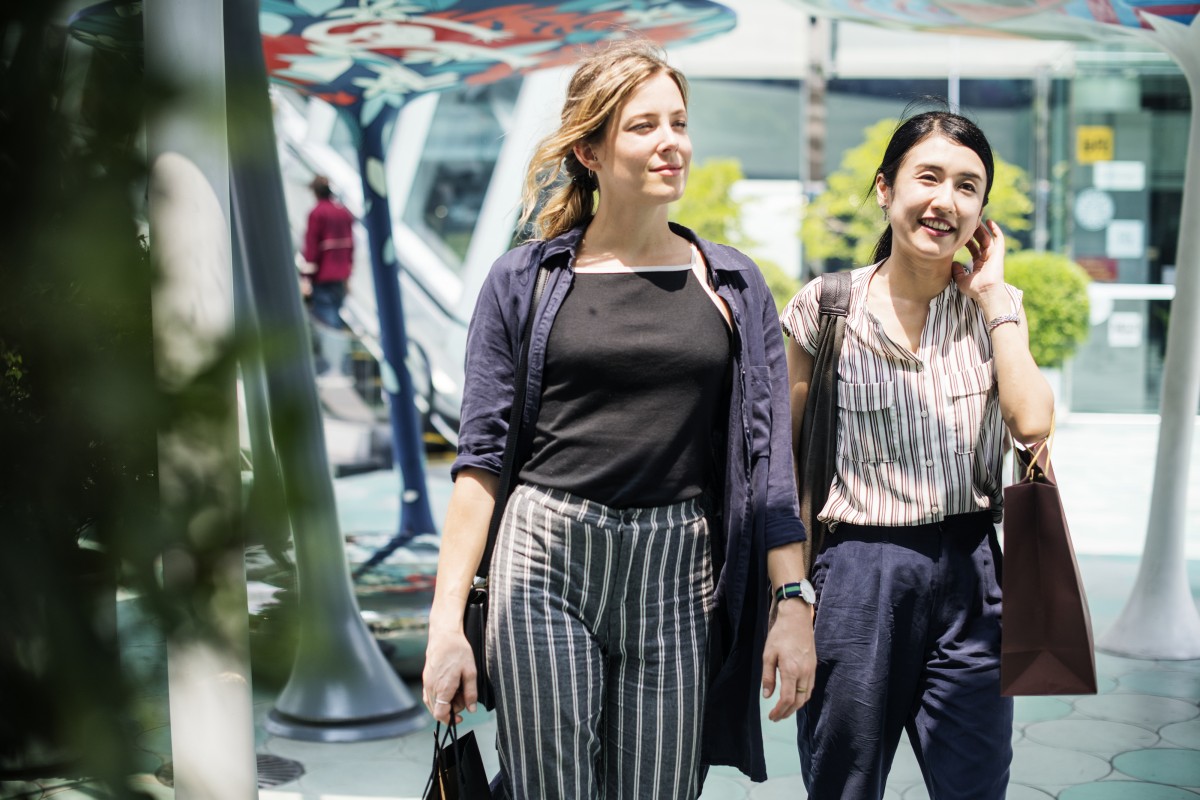
18. Linguistic Legacy of Colonialism
English, introduced by the British colonial administration as the administrative language, has played a pivotal role in Singapore’s linguistic landscape. Even after gaining self-governance in 1959 and achieving independence in 1965, the Singaporean government opted to retain English as the primary language of instruction and governance. This strategic decision was driven by the recognition of English as a global lingua franca, essential for facilitating communication, trade, and economic development on the international stage. By embracing English as a unifying language, Singapore positioned itself for economic growth and global integration, underscoring its commitment to forward-thinking policies and pragmatic governance. Business – Money Making – Marketing – E-commerce
19. A Fusion of Cultures and Identities
Singapore’s contemporary culture reflects a harmonious blend of Asian and European influences, shaped by centuries of migration, trade, and cultural exchange. Malay, South Asian, East Asian, and Eurasian elements converge to form a rich tapestry of traditions, languages, and customs that define Singaporean identity. Often described as an “East meets West” country, Singapore serves as a cultural crossroads where diverse traditions coexist and intersect, fostering a cosmopolitan ethos of openness and diversity. Embracing its role as a “Gateway to Asia” and a “Garden City,” Singapore celebrates its multicultural heritage while embracing innovation and progress, embodying the spirit of resilience, inclusivity, and dynamism. Health books, guides, exercises, habits, Diets, and more
20. Singlish: A Distinctive Vernacular
In addition to standard English, locals in Singapore are known for their unique linguistic creation known as Singlish. Singlish blends elements of English with vocabulary, syntax, and grammar from various Chinese dialects, Malay, and Tamil, resulting in a colorful and expressive form of communication. This distinctive vernacular serves as a reflection of Singapore’s multicultural society, where diverse linguistic influences converge to create a shared identity. While Singlish may not adhere to traditional grammatical rules, it embodies the vibrancy and creativity of Singapore’s linguistic landscape, enriching communication with its unique flavor and character. Fitness – Meditation – Diet – Weight Loss – Healthy Living – Yoga
21. Racing into the Night
Singapore made motorsport history by pioneering the world’s first Formula 1 night race. This groundbreaking event, inaugurated in 2008, transformed the city-state’s streets into a dazzling circuit illuminated by state-of-the-art lighting technology. Against the backdrop of Singapore’s iconic skyline, Formula 1 drivers hurtle through the illuminated track, thrilling spectators with high-speed maneuvers and heart-stopping action under the cover of darkness. The Singapore Grand Prix has since become a highlight of the Formula 1 calendar, attracting racing enthusiasts and tourists from around the globe to witness this electrifying spectacle of speed and spectacle. RPM 3.0 – 60% CONVERSION & Money for Affiliate Marketing
22. Green Oasis in the Urban Jungle
Renowned for its commitment to sustainability and environmental stewardship, Singapore has earned its reputation as one of the world’s greenest cities. Despite its dense urban landscape, Singapore has prioritized green initiatives and urban planning strategies to enhance its livability and ecological resilience. From expansive green spaces like Gardens by the Bay and the Singapore Botanic Gardens to innovative vertical gardens adorning skyscrapers, Singapore integrates nature seamlessly into its urban fabric. Through initiatives such as tree planting, wastewater recycling, and sustainable transportation, Singapore demonstrates its dedication to preserving its natural heritage and creating a greener, more sustainable future for generations to come.
More Interesting Articles
